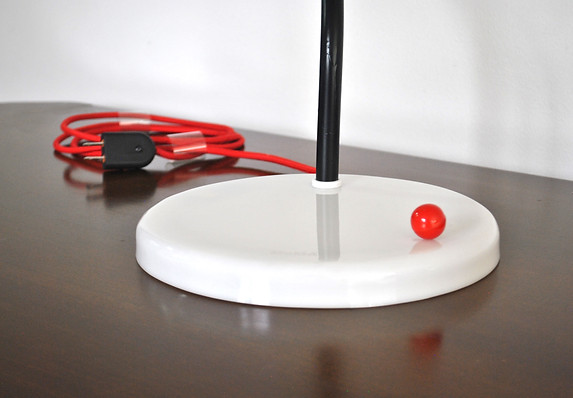
Desk lamp with a magnetic ball that turns on the light to fill the workspace with light.

Electronics + UX + Product Design + Design Concept
Overview
Description
LightSphere Lamp was inspired by the Timesphere Clock made by Gideon Dagan. Its design comes from lines and circles transported to the three-dimensional space, creating an object that fills the workspace with light. The lamp is turned on and off magnetically by placing the red ball at the points marked on the base.
Role
Engineer + Interaction designer + Product designer
Project parameters
4 months length - Individual project

Starting point
The starting point of this project was the exercise of replicating the MoMA TimeSphere Clock designed by Gideon Dagan.
The objective of this project was to understand the production processes used in this type of products and achieve a similar result with simpler and cheaper processes. In this case, the process used to replicate the clock was 3D modeling and printing. The biggest obstacle of this process is that it was not possible to achieve a high level of detail in the printing and the surfaces that hold the support material are not smooth.
This phase of the project was developed together with the designer David Feliciano.
.jpg)


.jpg)


Challenge
After replicating the TimeSphere Clock, we identified the design concept of the product to use it as a basis to design a new product.
The concept defined was: The Suspended Time.
The challenge was to design individually a product based on the same concept, design, and usability as the clock.
To meet that challenge, first I created a moodboard that visually illustrated the style I wanted to pursue based on the concept and the clock design. Then I explored different forms and interactions, until defining the final design parameters for the object.

The product was defined as a lamp with a suspended light controlled by the sphere.
Manufacturing process
The lamp was made with three different processes:
-
Thermoforming
-
3D Printing
-
Laser cutting
For the light, it was used a LED string connected to a reed switch that is activated magnetically.
All parts were assembled together by pressure.






Final Product







Biggest Learnings
-
The most challenging of this project was to achieve the desired shape of the pieces by molding the plastic. This allowed me to learn some tricks of processes such as thermoforming to get these forms.
-
Because the lamp was difficult to assemble and disassemble, I understood the importance of designing pieces that make this process easier.
-
This project made me more detail oriented when designing products.
-
An unknown terrain that I explored with this project was to create a product from a design concept and a moodboard that defined all the aesthetic elements of the design.